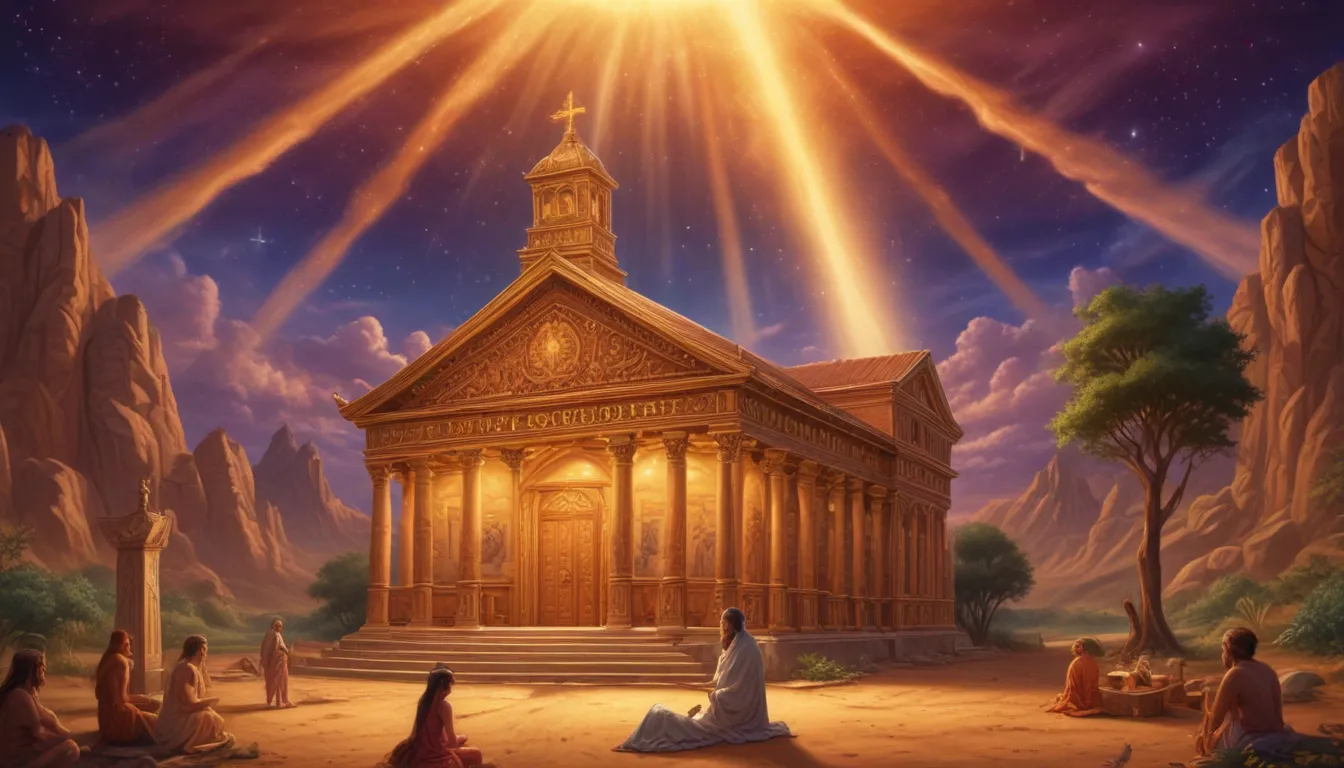
The Tabernacle is a central symbol in the spiritual lives of many Christians and Jews alike, representing divine presence and protection. Its intricate design and purpose hold deep significance that can enrich our understanding of faith. In this post, we’ll delve into the spiritual meaning of the Tabernacle, exploring its historical context, architectural elements, and symbolic importance.
I. Historical Context
The Tabernacle was a sacred tent or sanctuary where God dwelt among his people, the Israelites. It played a crucial role in their journey from Egypt to the Promised Land, as described in the Book of Exodus. According to the Bible, God instructed Moses to build the Tabernacle after delivering the Israelites from slavery. The construction process was guided by divine instructions given through Moses, who passed them on to skilled artisans.
II. Architectural Elements
The Tabernacle had three distinct sections or “courts,” each with its own purpose and significance:
-
Outer Court: This area served as a gathering place for the Israelites to worship God collectively. It featured an altar of burnt offering, where animals were sacrificed as part of religious rites. The laver (a large basin filled with water) was also located here, symbolizing purification and cleansing before entering the Holy Place.
-
Holy Place: This section was accessible only to priests who performed ceremonial duties on behalf of the community. It contained two main objects:
- The Menorah: A seven-branched candelabrum representing God’s light guiding his people.
-
The Table of Showbread: A golden table holding twelve loaves of bread, symbolizing God’s provision and nourishment for his chosen people.
-
Holy of Holies: This innermost sanctuary was the most sacred space within the Tabernacle. It housed the Ark of the Covenant, which contained the Ten Commandments written on stone tablets by the finger of God. The Holy of Holies could only be entered once a year by the high priest during the Day of Atonement ceremony.
III. Symbolic Importance
The Tabernacle’s symbolism is rich and multifaceted, serving as a spiritual blueprint for understanding our relationship with God:
- Presence: The Tabernacle signifies God’s constant presence among his people, even when they stray from him. It reminds us that he never leaves us or forsakes those who seek him.
- Protection: As a portable sanctuary, the Tabernacle represented divine protection during the Israelites’ journey through the wilderness. Similarly, we can trust in God’s care and guidance, particularly during challenging times.
- Community: The Outer Court emphasizes communal worship and fellowship among believers. It serves as a reminder that our faith should be lived out in community with others who share our beliefs.
- Ceremony and Ritual: The ceremonies performed within the Tabernacle, such as sacrifice and purification, point to the importance of ritual in maintaining a relationship with God. These practices help us focus on spiritual matters and deepen our connection to the divine.
- Humility: Only priests could enter the Holy Place, reminding us that access to God requires holiness and humility. This teaches us the value of seeking God’s wisdom and guidance through prayer and meditation.
IV. The Tabernacle Today
While the original Tabernacle no longer exists, its spiritual meaning continues to resonate with believers today:
- Church Architecture: Many Christian churches incorporate elements inspired by the Tabernacle, such as altars, candelabras, and sacred spaces for prayer and meditation. This helps create a sense of continuity between ancient worship practices and contemporary faith expressions.
- Symbolism in Religious Art: Iconography depicting the Tabernacle can be found in various forms of religious art, reminding us of its enduring significance within Christian tradition.
- Personal Devotion: The story of the Tabernacle offers valuable lessons for personal spiritual growth, encouraging us to cultivate a deeper relationship with God through prayer, ritual, and communion with others.
Conclusion
The Tabernacle remains an essential symbol in our understanding of faith, reminding us of God’s presence, protection, and guidance throughout history and into the present day. By exploring its historical context, architectural elements, and symbolic importance, we can deepen our appreciation for this sacred space and apply its lessons to our own spiritual journeys.





